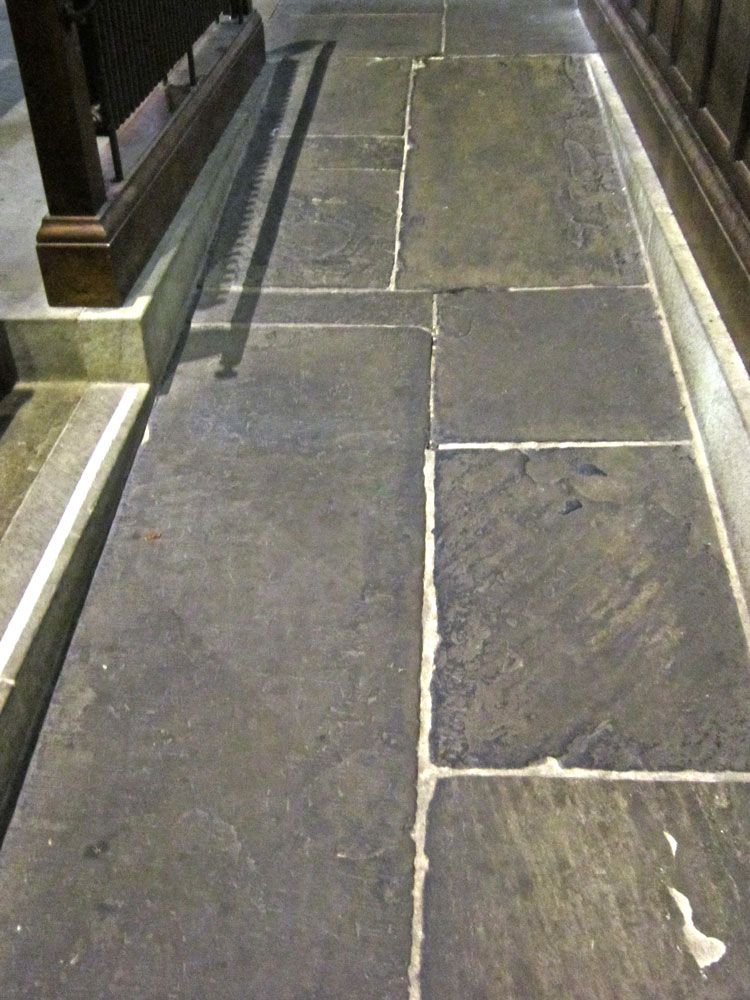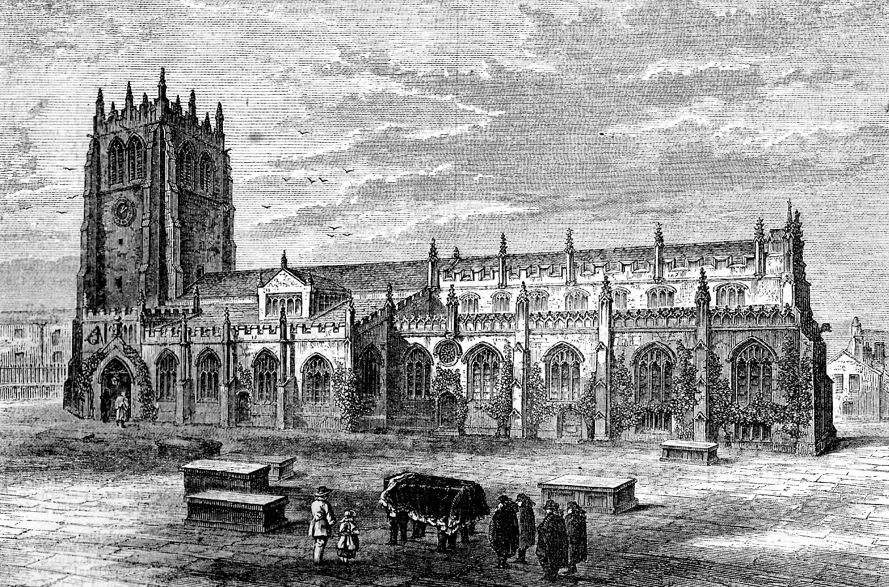
The Mystery of Gentleman Jack’s Tombstone
by David C Glover
It was when some Victorian pews were being removed at Halifax Parish Church in March 2000, that broken pieces of Anne’s tombstone were unexpectedly rediscovered
As I write, the BBC / HBO TV costume drama Gentleman Jack, showcasing scenes from the life of Halifax’s famous landowner, traveller and Lesbian, Anne Lister of Shibden Hall, is wowing audiences around the UK. This fine production, the brainchild of the amazing Sally Wainwright, and mostly filmed in Calderdale, has also been a hit in the USA, where it was aired earlier. Looking to explore Halifax and its Gentleman Jack filming spots? Save on hotels, tours and more with these Tripadvisor coupon codes on Shopper.com
Some years ago, I was asked to identify where Anne was buried in Halifax Parish Church (now Minster). This challenge was complicated by the fact that her tombstone apparently went missing in 1878/9! For 121 years thereafter, no record was made as to it, until the Millennium restoration of the Parish Church. Then, Anne’s broken, incomplete tombstone was rediscovered under wooden flooring near the north-west corner of the church. An amazing find!

First, I discovered that, back in the early 1870, Anne’s eventual heir, her cousin John Lister of Shibden, recorded her tombstone as being in the north aisle, west of the west cross aisle. This indicated the location of the grave.
Before I proceed, here’s a little about the burial of earlier Listers of Shibden Hall in Halifax Parish Church. The earliest remaining Lister tombstones date from the 1750s, and are in the south aisle; these include that of Anne’s grandfather Jeremy, who died in 1788.
Later Listers were buried not too far away. At the time of her Uncle James Lister’s funeral on 3rd February 1826, Anne mentions in her Diary: “Our burying place is in the south chapel, at the west end, next to the constable’s pew.”
“…We are informed that the remains of this distinguished lady have been embalmed and that her friend and companion, Miss Walker, is bringing them home by way of Constantinople, for interment in the family vault.”
From this it may be deduced that the Lister Family vault was then at the west end of the Holdsworth Chapel, adjacent to the screen. From records at Wakefield, we may prove that the Constable’s pew in Halifax Parish Church was then to the rear of the pews on the south of the south aisle of the nave. There is no sign of a vault today; the area is covered with floorboards, which probably date from 1879. And sadly, there are no memorial inscriptions to Anne’s uncle and aunt, her father, and their generation; nor to her two young brothers who apparently lie there also.
Further information about the family vault in the Chapel may be gleaned from an entry in Anne’s famous diary. At the time of her aunt’s burial in October 1836, Anne records: “I stood over the grave the whole time, saw the coffin lowered…. It was the same vault in which my father & I had seen my uncle laid in 1826. I saw no trace of my uncle’s coffin, yet my aunt’s seemed to sink deep down, deeper than I expected tho’ I had ordered it to be laid as deep as possible…”
In 1840, it took five weeks for news of Anne’s death in Georgia to reach Halifax; it was announced in the Halifax Guardian on 31st October. The announcement includes these words: “…We are informed that the remains of this distinguished lady have been embalmed and that her friend and companion, Miss Walker, is bringing them home by way of Constantinople, for interment in the family vault.” The body was taken to Moscow for embalming.

On 1st May 1841, the same newspaper reports the burial – “…The remains of this lady (who, our readers will remember, died at Koutais, in Imerethi, on 22 September last), arrived at Shibden Hall late on Saturday night and were interred in the parish church on Thursday morning.”
From the 1836 diary entry, it seems fair to conclude that there remained space in the Lister vault after the burial of Anne’s aunt in that year. Surely this was where she herself would have wished to be buried, and the scheme mentioned in the newspaper report of October 1840 would have been carried out when Anne’s burial took place on 29th April 1841.
For some reason this did not occur; probably because the large lead shell in which Anne’s body was placed after her embalming, was encased in a larger wooden coffin. It appears this resulted in the object being far too large to be placed in the remaining space in the small family vault. Therefore we presume a new grave was dug, at a completely new location in the church.
We know that the inscription on the tombstone originally read: “In memory of Anne Lister of Shibden Hall, who died the 22d Septr 1840 at KOUTAIS in GEORGIA, and was interred here the 29th April 1841, AEt 49.”

The Parish Register entry of burial, annotated by Archdeacon Charles Musgrave, gives a slight indication as to the inscription on Anne’s coffin plate:
“… who died September 22nd 1840 at Koutais in Imeritia, or, as written on the Coffin Plate, Imerithi. C.M.”
It was when some Victorian pews were being removed at Halifax Parish Church in March 2000, that broken pieces of Anne’s tombstone were unexpectedly rediscovered, adjacent to its recorded location in the early 1870s.
Today, what survives is only about a sixth of the stone. Its original width may be gauged by the known missing words, and presumably it was originally some six feet long. When you view the remains, you will find the deceased’s name has apparently been chiseled out, and the stone shattered. Was this a deliberate act of hate, carried out by those who disliked Anne, less that forty years after her death? It is an intriguing theory. Mystery as to Anne Lister’s tombstone remains, but we must be thankful that its remains were rediscovered.
At the time of writing, the surviving pieces are displayed on a windowsill on the north side of the nave in Halifax Minster.



